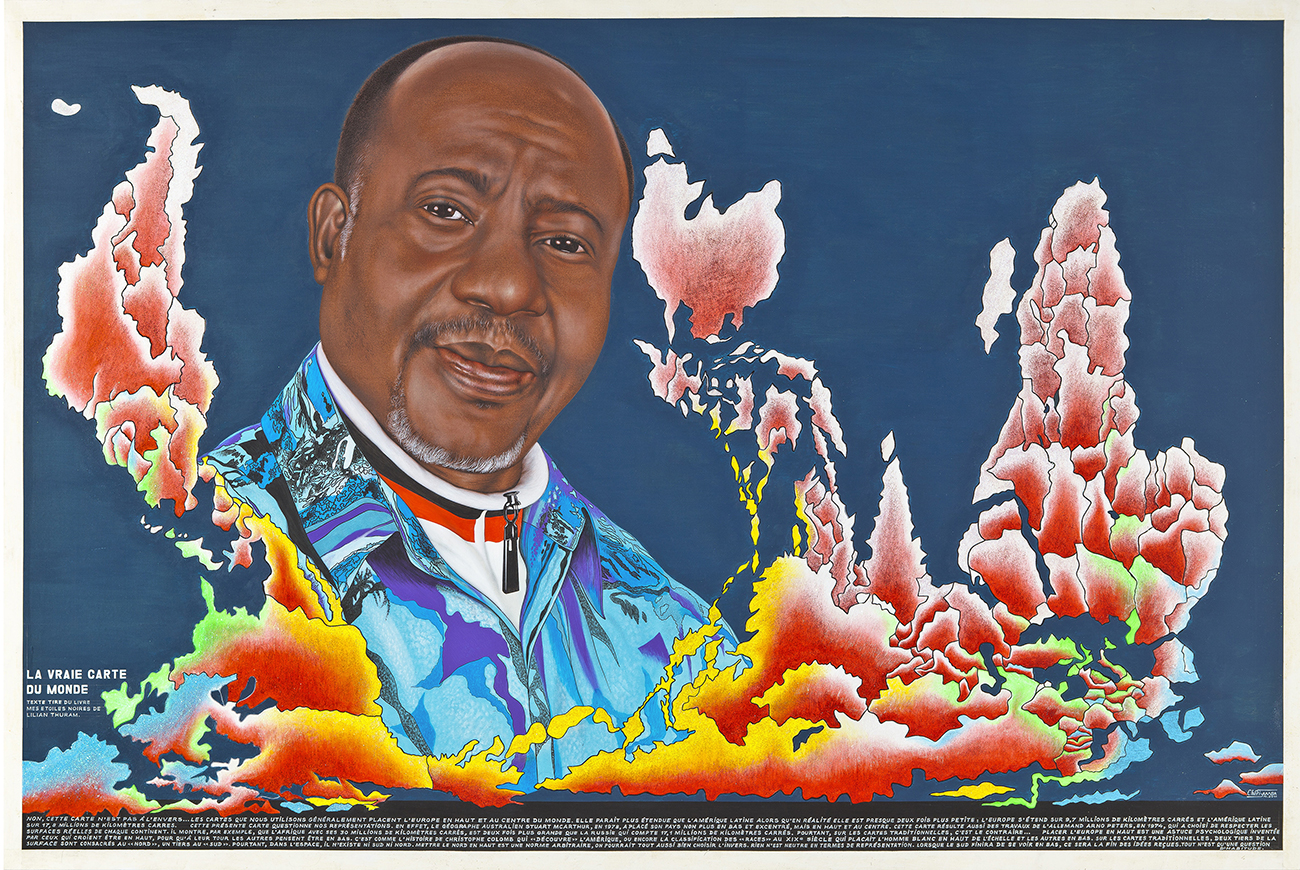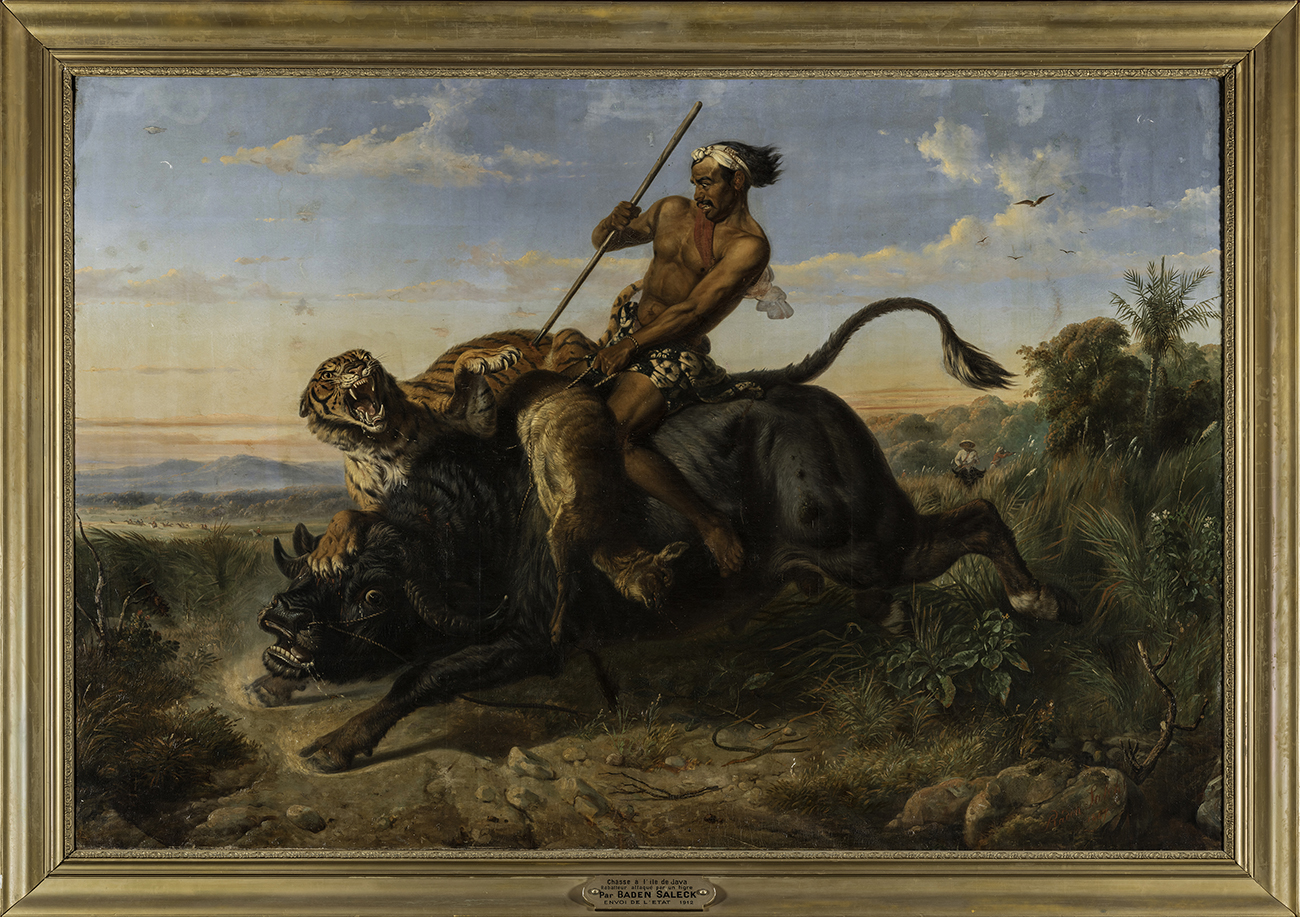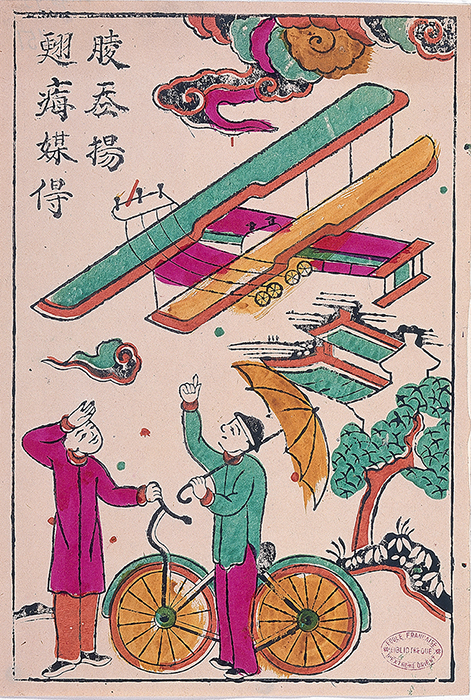Another history of the world
Mucem, J4—
Niveau 2
|
From Wednesday 8 November 2023 to Monday 11 March 2024
This exhibition aims to present a decentred history of the world from the 13th to the 21st century in an accessible and reflective manner. Without claiming to represent the world in its entirety, it invites visitors to abandon the Western perspective that is still dominant today, in order to focus on other points of view in Asia, Africa, America and Oceania, where sculptures, paintings, textiles, maps, archaeological objects, manuscripts and decorative arts give a different view of successive globalisations. These works allow us to understand the relationship to time and space of societies outside Europe, while highlighting their way of writing history. Lakota buffalo skin, Kanak engraved bamboo, Javanese historiated sarong, and Senegalese griot's narrative testify to the infinite richness of vernacular historiographies.
The voyages and explorations of Arab, Asian and African merchants, pilgrims and scholars who "discovered" distant lands and produced new knowledge would upset these so-called traditional conceptions of the world. African cowrie shells and Chinese navigational charts are a powerful reminder that globalisation was multipolar in Central Asia, the Indian Ocean and far beyond. In the wake of the progressive decompartmentalization of the globe, Europeans themselves became the subjects of numerous and sometimes confusing representations, and the world an object of multiple curiosities and encyclopaedic ambitions outside the West. Faced with the Eurocentric narrative produced by the colonial empires from the 17th century onwards, sovereigns, elites and artists of other continents have sought to reappropriate their history, sometimes drawing on Western practices, in order to stage their power or anti-colonial resistance. Today, new national novels allow them to rewrite their past by reinventing their relationship with the world.


